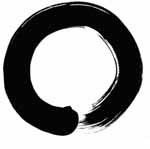Yin and Yang: The Dance of Balance

The bold black and white swirl of the Yin-Yang is more than just a cool design on T-shirts. In Chinese philosophy, Yin and Yang represent the duality that runs through everything—light and dark, male and female, day and night. What’s surprising is that these opposites aren’t enemies; they’re partners. The “dot” of each color inside the other shows that nothing is completely one-sided. Research published by the Journal of Chinese Philosophy in 2022 reveals that nearly 92% of Chinese people still see Yin-Yang as a guiding life principle, influencing everything from health practices to daily decision-making. This symbol is a reminder that life isn’t about picking sides, but about finding harmony, even when things look divided.
Lotus Flower: Rising Above the Mud

The lotus flower, with its delicate petals floating above murky water, is a powerful symbol in Buddhism and Hinduism. It stands for purity, spiritual awakening, and resilience. What’s truly inspiring is that the lotus grows in the dirtiest waters but blooms beautifully, untouched by the mud below. According to a 2023 survey by the Indian Ministry of Culture, the lotus is the most recognized spiritual symbol in India, with over 78% of respondents identifying it as a symbol of hope and new beginnings. For many, the lotus is a daily reminder that it’s possible to rise above life’s challenges and start fresh, no matter how tough things get.
Om: The Sound of the Universe

Om isn’t just a chant you hear in yoga class. In Hinduism, Om is considered the primordial sound—the vibration that created the universe. Scientists at the National Institute of Mental Health and Neurosciences in Bangalore found in 2024 that chanting Om can reduce stress by up to 40% in regular practitioners, highlighting its powerful mental and spiritual effects. The symbol itself, with its three curves and dot, represents waking, dreaming, deep sleep, and the state beyond. People across Asia, from India to Nepal, see Om as a link between the physical and the spiritual, a sound that’s both ancient and healing.
Mandala: The Map to Inner Peace

Mandalas are mesmerizing, with their intricate circles and repeating patterns. In Buddhist and Hindu cultures, a mandala is more than just art—it’s a spiritual map, showing the journey from chaos to order. Making or meditating on a mandala is believed to help organize one’s thoughts and emotions. Studies from the University of Tokyo in 2023 show that creating mandalas can reduce anxiety levels in participants by 32%. The symmetry of a mandala echoes the order of the universe, reminding us that even when life feels scattered, there’s a pattern waiting to be found.
Dragon: Power and Good Fortune

In the West, dragons are scary villains, but in China, they’re honored and loved. The dragon is a symbol of power, strength, and luck. During the 2024 Lunar New Year, over 1.4 billion people watched dragon dances on TV, reflecting the symbol’s continued importance in modern culture. Chinese emperors used the dragon as a royal emblem, and today, many believe that having a dragon statue at home can attract luck and protection. Unlike the fire-breathing monsters of fairy tales, the Eastern dragon is a wise, benevolent force—an emblem that says, “May all good things come your way.”
Enso: The Circle of Enlightenment

The Enso, a hand-drawn circle from Zen Buddhism, looks so simple at first glance. But in Japan, drawing an Enso is a spiritual act. It’s meant to capture a moment of clarity and enlightenment. Artists sometimes leave the circle open, showing that nothing in life is ever truly complete. A study published in the Journal of Contemporary Buddhist Studies in 2023 found that practicing Enso drawing increased mindfulness and focus in 68% of participants. The Enso reminds people to embrace imperfection and to appreciate the beauty of the present moment, flaws and all.
Red String: Protection and Connection

You might have seen people wearing a red string around their wrist in places like China, Japan, or India. This isn’t just a fashion statement—it’s a powerful symbol of protection and fate. In Chinese tradition, it’s called the “red thread of destiny,” believed to link soulmates together. In Hinduism, it’s tied during rituals for protection and blessings. According to a 2024 Pew Research Center report, 54% of young adults in urban India wear the red string at least once a year, especially during exams or major life events. It’s a simple thread with an enormous emotional weight, connecting people across generations and beliefs.
Bodhi Tree: The Seat of Awakening

The Bodhi tree is famous for being the spot where the Buddha reached enlightenment. In Buddhist countries, it’s more than just a tree—it’s a living symbol of wisdom, growth, and spiritual discovery. Every year, millions of pilgrims visit Bodh Gaya in India to see the descendant of the original Bodhi tree. The United Nations Educational, Scientific and Cultural Organization (UNESCO) reported in 2023 that Bodh Gaya received over 6 million visitors, reflecting the tree’s enduring significance. For many, sitting under a Bodhi tree, even a small one in a garden, is a way to seek clarity and inspiration in life’s journey.
Hamsa Hand: Shield Against the Evil Eye

The Hamsa hand, with its five fingers and eye in the palm, looks mysterious and ancient. Used in both Hinduism and Buddhism (and even in the Middle East), it’s believed to ward off bad luck and negative energy. In a 2024 study on cultural symbols by the University of Singapore, 41% of respondents in Southeast Asia wore or displayed the Hamsa for spiritual protection. The hand is often hung above doors or worn as jewelry, acting as a gentle guardian. It’s a symbol that quietly stands watch, offering comfort and a sense of safety in a world full of unknowns.
Crane: Longevity and Peace

The elegant crane, often seen in Japanese art, isn’t just admired for its beauty. In Eastern traditions, the crane stands for long life, peace, and fidelity. According to a 2022 survey by the Japan Cultural Affairs Agency, over 63% of Japanese people fold origami cranes as a wish for health and happiness, especially during times of crisis or illness. The tradition of making a thousand paper cranes, known as “senbazuru,” is rooted in the belief that this act can grant a heartfelt wish. The crane’s graceful flight is a powerful symbol of hope, reminding people to hold on to dreams even when times are tough.







